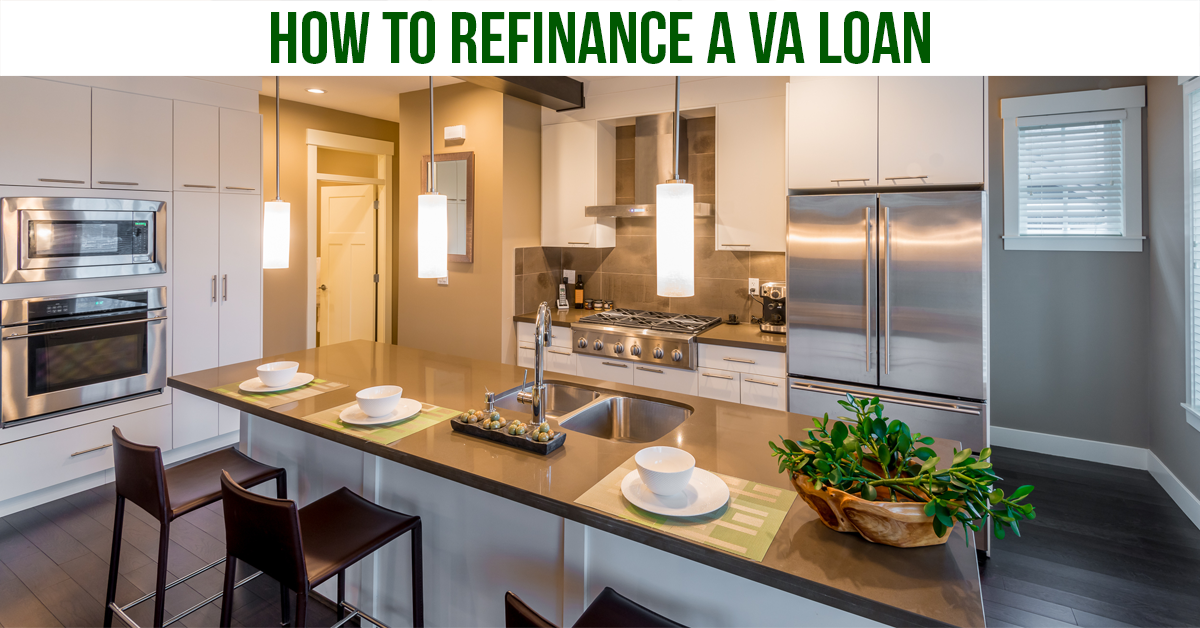How to Refinance a VA Loan
The benefits of a mortgage backed by the Department of Veterans Affairs continue beyond the day your loan closes. You can lower your rate, tap into your home’s equity or even bring your conventional loan into the VA program by refinancing.
Two types of VA refinances
You can refinance your VA loan two different ways:
- With an interest rate reduction refinance, also known as a VA streamline.
- With a VA cash-out refinance.
Interest rate reduction refinance loan
The interest rate reduction refinance loan “is envisioned as a low-impact, no-frills refinance that exists to get veterans into a lower interest rate,” says Chris Birk, director of education with Veterans United Home Loans in Columbia, Missouri.
To refinance into an IRRRL, you must already have a VA mortgage. Also, the rate must be lower on your new loan, unless you’re refinancing out of a VA loan with an adjustable rate.
Unlike with most other refinances, your home doesn’t have to be your primary residence. All that’s required is prior occupancy. If you’re stationed in a new area and want to keep your first home, for instance, you can refinance that mortgage without living in the home.
Some lenders might require a minimum credit score, minimum income or an appraisal for a streamline refinance, Birk says. They might also require that you not have had any late mortgage payments within the past 12 months.
Cash-out refinance
If you want to tap into your home’s equity, you can refinance your current mortgage — whether it’s VA or conventional — into a VA cash-out refinance loan.
Lenders always require a minimum credit score and an appraisal with this type of refinance, and the home has to be your primary residence.
You may be able to finance up to 100% of the appraised value of your home, though the exact amount you can borrow will vary depending on your lender and where you live.
The only way to bring a conventional loan into the VA program is with a cash-out refinance.
» MORE: Calculate your refinance savings
Eligibility
To qualify for a VA refinance, you must be an active-duty service member, an honorably discharged veteran or the spouse of a current service member or veteran. If you’re the widow or widower of a veteran and want to refinance a VA loan, you must be unmarried at the time of the refinance, and your spouse has to have died in the line of duty or from a service-related injury, unless you’re applying for an IRRRL. In that case, the cause of death doesn’t matter, but you need to have obtained the VA loan prior to your spouse’s death.
Credit score and income requirements vary by lender, according to Jimmy Vercellino, a mortgage originator and VA loan specialist with First Choice Loan Services in Scottsdale, Arizona.
Vercellino says minimum credit score requirements can range from 580 to 640. Birk says that a common minimum credit score is 620.
In terms of your debt-to-income ratio, Vercellino says that 41% and lower is the norm, but lenders may accept a DTI as high as 56%, depending on your credit score, payment history and savings.
Because it’s the lender that’s putting money on the line rather than the VA, Vercellino says, the lender is able to put its own requirements on VA loans (the VA’s guaranty might cover only a quarter of each loan). And if one lender says no, it doesn’t mean that you can’t qualify for a VA loan somewhere else.
Fees
VA refinances typically come with the same fees as other refinances, such as origination and closing costs. But there is one fee that’s unique to the program — the VA funding fee.
- The funding fee on an IRRRL is 0.5% of the loan amount.
- On a VA cash-out refinance, it’s 2.15% of the total loan, unless it isn’t your first VA loan. In that case, it’s 3.3%.
- If you served in the National Guard or Reserves, the fee is 2.4% if it’s your first VA cash-out refi.
You don’t have to pay the VA funding fee if you have a service-related disability or if you’re the surviving spouse of a service member who died in the line of duty or from a service-related injury. And unlike conventional and Federal Housing Administration loans, VA loans never come with private mortgage insurance.
You can wrap all refinance fees into a VA streamline, but not with a cash-out refi. With this type of refinance, you have to pay closing costs at closing. But you can do this using money from the new loan.
The article How to Refinance a VA Loan originally appeared on NerdWallet.


